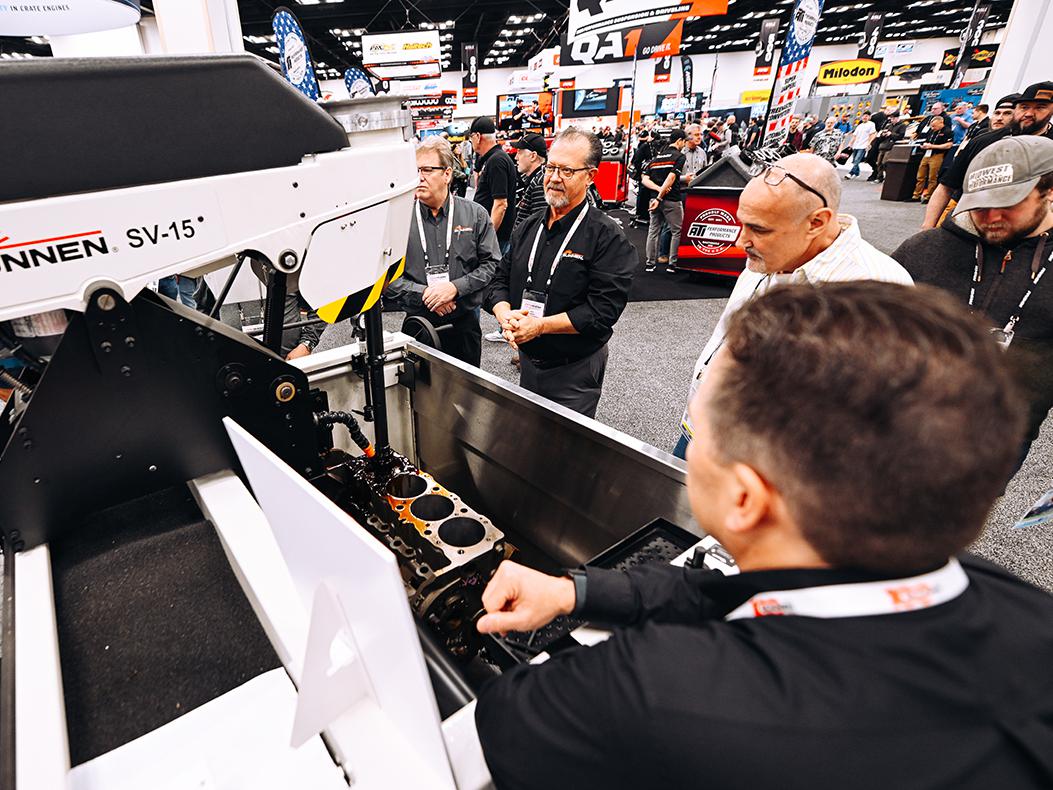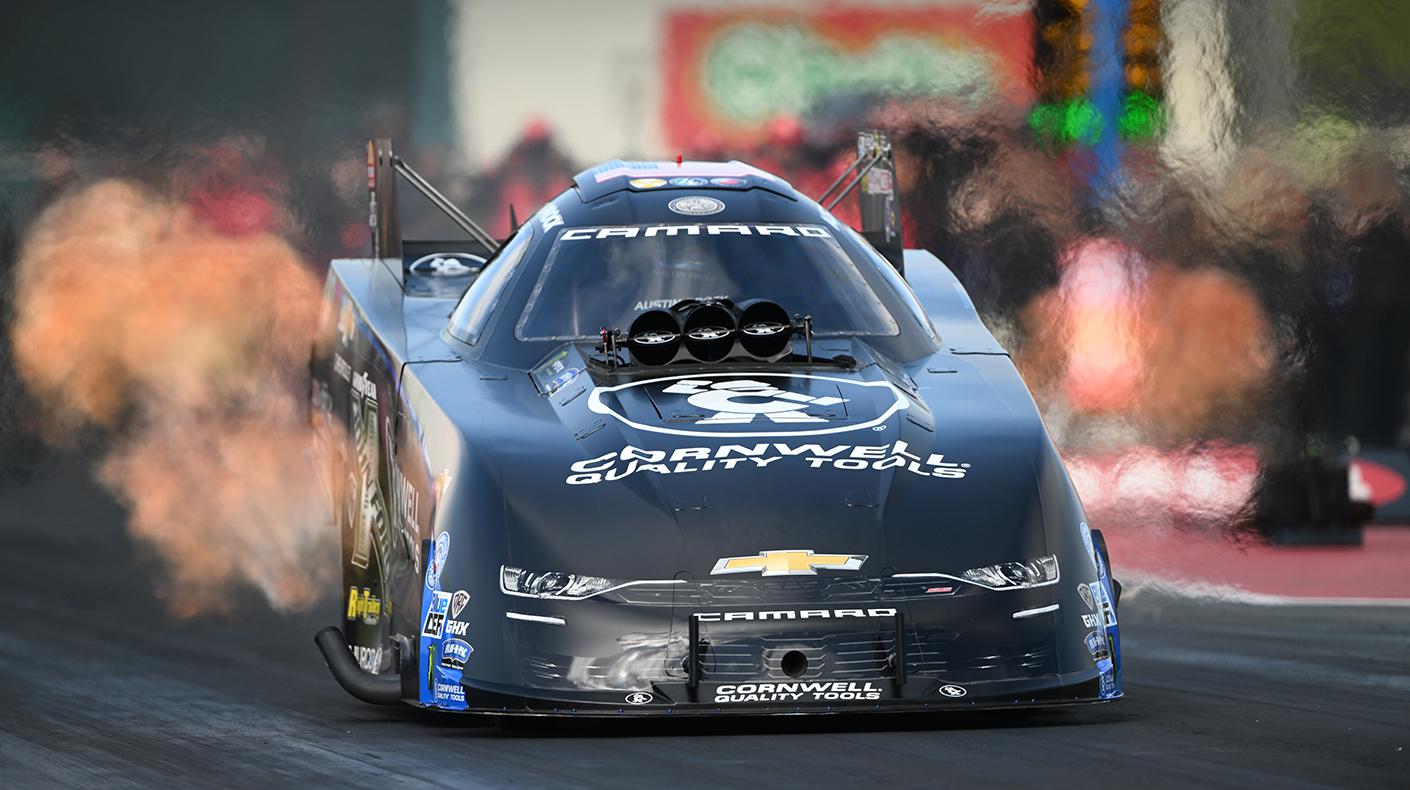New Tools of the Trade: Fabrication Equipment
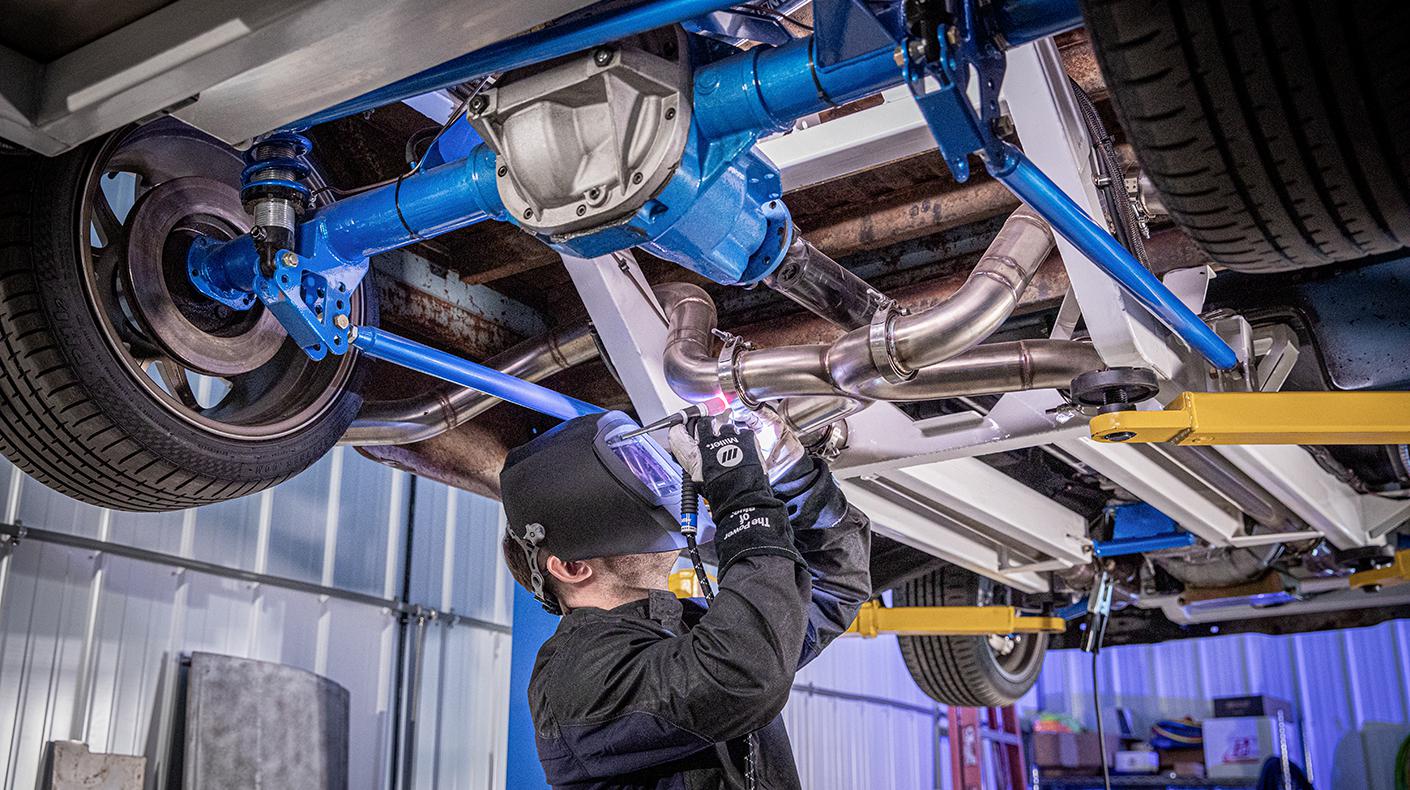
Whether it's neat or in a little bit of disarray, the typical race shop commonly houses a combination of new tools and equipment that looks like it's at least a generation old: Maybe with chipped paint or faded lettering but still pressed into service regularly to perform its tasks. The old standby could be a milling machine, a lathe, or a specialized cutting tool. No matter how serviceable they've been in the past, tools will wear out in time.
Knowing when, and how, to replace these tools is a critical consideration, especially when the tools are involved in such important tasks as forming the basic structure of a race car, off-road vehicle, or another type of competition vehicle. Forming a race car frame often involves shaping or cutting, usually either tubular steel for the frame or sheet metal to create the body or interior. If a shop doesn't have properly functioning bending, shaping, or cutting equipment, the race car project is all but guaranteed to go awry. So even if the tools in the shop seem to be functioning well, most shops would benefit by factoring eventual replacement for at least some of them into the budget.
Welding Growth
According to the American Welding Society, positions will exist in the industry for about 30,000 new welders by 2028. Add to that the predicted industry growth to $28.6 billion by 2028 according to Fortune Business Insights. The need for new welders, and replacement equipment, is therefore projected to grow substantially.
One challenge a fabricator or race team with older equipment may face is product support, or the lack thereof. When it comes to welding equipment, Andy Weyenberg of Miller Electric in Appleton, Wisconsin, noted that builders should complete "a needs assessment on the age of their current products. Do they rely on those products, and do they have a backup plan in case something fails?" He added that manufacturers often don't carry replacement parts for equipment that is older than 15 years.
The latest technology in welding gear is the use of inverter power, as opposed to the traditional rectifier-type units. "With the older unit, you may have a lot of voltage coming out of your wall, but not a lot of amperage. You want to flip that," Weyenberg said. "The inverter takes low voltage and electronically converts it to high amperage. With the inverter, your efficiencies get up into the 90% range, so you'll spend less on your power bills, which can be substantial if you weld a lot."
One unit that represents a model welding system today is the Millermatic 255, an inverter unit that's a little smaller in size, with a USB port that makes it simple to download software upgrades from the Miller Electric website and is internally programmed. Weyenberg noted that major operations such as Hendrick Motorsports and Richard Childress Racing use systems such as these, noting "They have plenty of power for rollcages and things like that."
A newer unit from Miller Electric is the Syncrowave 212, which is designed to make TIG welding a simpler proposition. The Syncrowave 212 allows welding of metals ranging from stainless steel to titanium. An Auto-Set feature allows the welding job to be measured without guesswork automatically. A graphic interface display allows the operator to read the progress of the job more accurately. A water cooler for longer-lasting welding operations is optional.
Fabricator's Vision
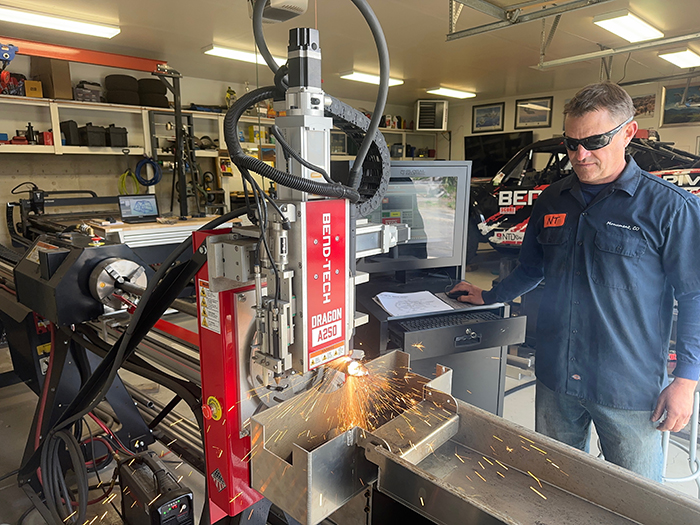
At JMR Manufacturing in Paso Robles, California, the business of developing tools grew out of necessity, as Jim McKenzie explained. Founded in 1989, JMR got its true start when McKenzie was building and racing pro trucks. "This was almost an unintentional business," he said. "Our first tool was a hydraulic bender, and then we completely revolutionized the world of tube notching. We built the first notcher capable of working at unlimited angles, and the first one capable of being clamped onto a car using already existing points or holes through the tubing. This was the vision of a fabricator, not a tool designer who didn't really know the end use of the tools. JMR's product inventory, aimed at fabrication and specialty cutting, now includes dimple dies, belt sanders, flaring tools, fixture tables, and welding tables. JMR now produces seven varieties of benders."
To better understand JMR's product line, it may be helpful to explain how tube bending works. As McKenzie described, the bender is a machine that changes the angle of the tube by using a rotating metal die in creating the bend. "You need an exact-size die for every type of material you're going to bend," he said. "The main thing we see here is people using a lot of bending equipment that's made for other purposes than race car fabrication. Using general-purpose benders means they bend in what's called rotary compression, which flattens the tube considerably and doesn't result in a clean bend. Some people use antiquated hydraulic systems such as a Porta-Power [a hand pump once commonly used in firefighting and rescue operations], with single-acting hydraulic rams. We were the first to put in double-acting hydraulics, using a flow meter valve to measure the speed of the bend until you can hardly see it moving, even if the bend is only half a degree. With the Porta-Power, it's like an on-off switch. I tell people it's like trying to stop a gas pump at exactly 20 bucks."
McKenzie added that there's a big difference between a weekly racer making 15 bends to straighten a rear bumper and a race car manufacturer that will make 300 or more bends every day. JMR's most popular component is a 30-inch x 42-inch fabrication station that combines the bender, tube notcher, and table in a single package, augmented by one JMR bender that will use dies from other manufacturers, saving the user $15,000 or more. "It's invaluable to a person trying to make parts," McKenzie explained. "You lay the work on the table, and it comes out with the same bend every time. Let's say you can save two minutes a bend, and five minutes a notch, and you have 300 notches to make. You're talking about 25 hours saved just in the notches."
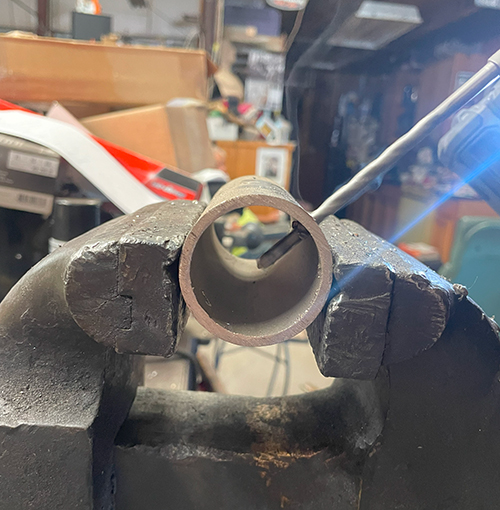
Cutting Essentials
In the world of motorsports fabrication, proper cutting is essential regardless of the size of the hole being cut. The smallest cuts fall into the province of Bad Dog Tools, based in Bristol, Rhode Island, where Ann Strong oversees the creation of not only the firm's signature drill bits, but also specialized systems to sharpen them en masse. Since opening its doors in 1988, Bad Dog has sold more than six million bits, made from a proprietary compound called Carbaloid. Made from a complex amalgam of carbide, titanium, and cobalt, Carbaloid provides a cobalt-based specialty hardness level.
Every Bad Dog bit is guaranteed for life, but the company still has ways to extend that service life. "I recommend anybody who's drilling also get themselves a custom bit sharpener, to make sure the bit will have an edge that's less apt to fail," Strong explained. "If a poorly sharpened bit fails in a hole, it can open up all kinds of catastrophic outcomes. Our bit sharpener is a carousel system that holds 72 bits, and it holds the bit against the diamond wheel using a robotic arm, the same wheel you'd use if you were doing the bit by hand. Every single bit is sharpened to perfection, so the customer knows he's getting a perfect-quality bit."
No matter what a team plans to install in a new race car, a hole will likely have to be cut at some point to accommodate it. This type of specialized cutting is the stock in trade of Blair Equipment Company in Swartz Creek, Michigan, whose main products are cutters that slice through metal, especially sheet metal.
"When it comes to replacing our tooling, because it is a cutting tool, it may become worn out or dull," noted Greg Londrigan. "In terms of the actual cutting tool, a lot of our tools [in some cases, Blair officially calls them "Holcutters"] will fit into the arbor of a magnetic tool. The cutter will just thread onto the arbor, and after its life is over, unthread that or thread on a new size or diameter, because they're interchangeable.
"A cutter is most often replaced because it is a cutting tool, and tool life varies depending on how hard it is, if you use lubricants while cutting, how hard the material is, your feeding speed. It will eventually wear out," Londrigan said. "Our blades are made out of high-speed steel, M42 cobalt steel, and carbide tips. Their life varies depending on usage. I've met people at trade shows who have had one set of cutters for 20 years.
"These tools are used for a variety of applications: removing spot welds, making holes in frames and sheet metal, for gauges, for switches, anywhere you might put a hole in the car," he continued. "Our most popular cutters are our Rotabroach cutters. The investment varies by size. It could be $10 or could be hundreds of dollars. A race team can use more than one. It's very popular to buy them in kits, with a carrying case that makes it convenient to store your tools and take them to the track. It is a very popular way for race teams to get these tools."
Benders And More
One business that comes close to being a one-stop shop for fabricating equipment of all sorts is Trick Tools in Pella, Iowa. Bruce Van Sant said the firm's position is that quality equipment leads to quality outcomes.
"I would say that we pride ourselves on providing equipment that lasts decades, so we may be our own worst enemies at times," Van Sant said. "The reasons to upgrade are two: You bought a low-quality tool that breaks or doesn't do its job well, even though it looks like it will do well. But it's a cheap import or imitation, and you then realize you should have spent money. The other side is, we've been working with metal and shaping it since people built suits of armor hundreds of years ago, but technology improvements since then could persuade someone to upgrade. Thirty years ago, we started upgrading with programmable bending machines instead of the antiquated kind where you're pulling a lever or using hydraulics. Now you load in what you want your bend angle to be and hit the button. It requires less skill. I have only one guy in my shop who can do this, and if I need to replace him, the technology has made it a lot easier for people to do quality jobs."
Today's desired unit from Trick Tools is a bending machine that is repeatable, accurate, digitally programmable, and sets its own stops, rather than the traditional method of using measuring tape and a marker, Van Sant said. "You'll typically find a semi-automatic machine that is full CNC, which tends to be fairly expensive. But finding and training people is expensive, too. A tool like that will probably have a lifespan of 20 years."
Advanced tubing benders are the specialty of Bend-Tech in Osceola, Wisconsin. At Bend-Tech, Kyle Merry said he's seen three common replacement scenarios.
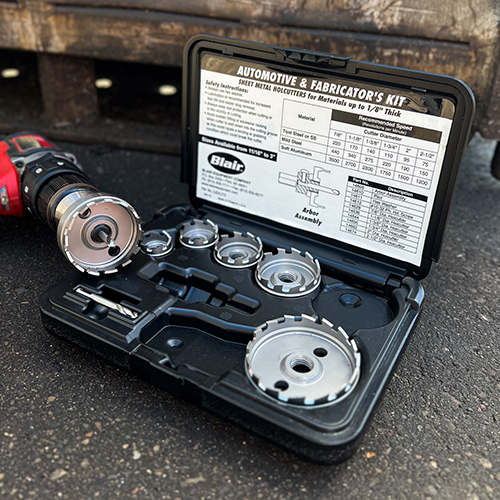
"Does the workforce not know that application, especially if a lot of the workforce is starting to retire? The new equipment is not their era, and they don't know what to do with it," Merry explained. "The second is when companies are spending a lot of time on labor and upkeep for their equipment, more than what is being saved by that machine. And world competition is taking up more market space. I've seen a lot of groups that have several competitors taking on more and more work because they're updating their machinery, and becoming more and more efficient, so the original shop is falling behind. What I've seen as kind of a challenge is a father-and-son duo, where the father wants to keep traditional, and the son wants to save time and whatnot. Otherwise, it's a no-brainer for people."
New equipment from Bend-Tech is typified by the firm's PB 2000 DC tubing bender, now a featured company product. "The largest improvement by far is automation and having the ability to respond to software like a CAD file," Merry said. "You put it in, and your parts come up. AI is something that's up and coming, and we see it a lot with the 3D scanning world. We now have more than 3,000 machines out there, in this industry, for chassis and rollcage fab, but now also for side-by-sides and rock climbers, doing their armor, rock sliders, and roll cages so you don't have to go to a full fabrication job. It really simplifies the process of bending. You can calculate material stretch and spring-back, and the unit will help output all that information. I got a testimonial that the customer went from a full cage and chassis done in three weeks, down to done in five days."
Woodward-Fab has been in business outside Detroit, Michigan, since 1966, creating solutions for saving costs through its metalworking machinery. Its huge range of products includes benders, cutters, bead rollers, shears, shrinkers and stretchers, saws, pressers, and more. Phil Heck—Woodward-Fab's umbrella company is Heck Industries—offers a variety of machine complexity for replacement scenarios, depending on the customer's needs.
"If you're replacing fabricating equipment, some equipment will lose accuracy or performance with used machines," Heck said. "A newer machine might be more accurate and offer more capacities than the equipment you might already have in the shop. A bending brake will get worn out, all the joints get sloppy, and the bearings will become loose, and you don't get accurate bends, which would be a struggle for the operator. In the real world, fab equipment is fairly simple in nature, unless you're looking at computerized machines. The simple ones will last you one lifetime or more.
"We manufacture and sell many different manual fabricating tools, because our business is 95% manual," he said. "It's usually a lifetime purchase, so if you've got a new shop opening or expanding, you'll be looking for fab equipment. Because the equipment lasts so long, you're not going to find used equipment on the market easily. It'll never become an antique. People don't sell them. Our equipment can go to a hot rod shop with a fab department, or restoration shops, which are two of our primary customers. There's a lot more rusty cars than race cars on the market, so it's a much larger market for us.
"We have some specialized equipment we manufacture here, such as metal cutting machines, nibbling machines for cutting sheet metal, chamfering machines for finishing the edge of sheet metal or a plate, that's what we're most knowledgeable about," Heck continued. "They're still considered a lifetime purchase."
Sources
Bad Dog Tools
Bend-Tech
Blair Equipment
JMR Fabrication Tools
Miller Electric
Trick Tools
Woodward-Fab
To read more like this for free, sign up for a digital subscription to PRI Magazine on Zinio here.
Once you download the Zinio mobile app or are logged into Zinio on a desktop browser, you will gain immediate access to more than a year's worth of content, including "Innovation Next: Dirt Late Models" here and machinery coverage in the August 2025 issue here.
 MEMBERSHIP LOGIN
MEMBERSHIP LOGIN JOIN PRI
JOIN PRI
